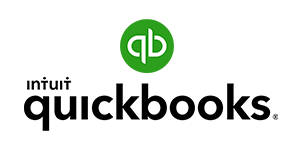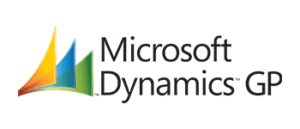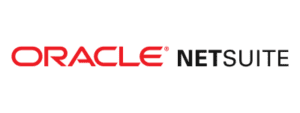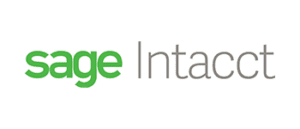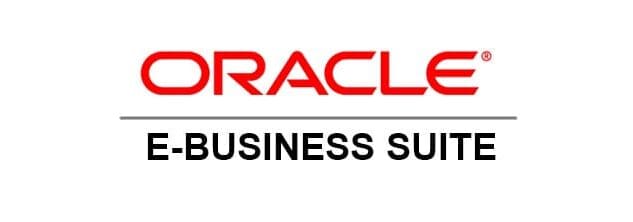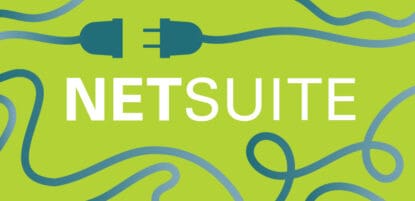An Overview of ERP Systems
Enterprise Resource Planning (ERP) refers to a software that allows companies to manage various parts of their organization. They are commonly used within the finance department, including accounts payable, accounts receivable, and purchasing. The tool’s capabilities also extend into other areas to help companies manage inventory and customers, and enhance communication between departments and team members.

What is an ERP’s role in AP?
ERPs are powerful tools: they serve many teams and offer wide functionality. They are especially critical for accounting teams; so much so that 89% of companies view them as a necessity for the department. This is because ERPs function as the business’ system of record and store information regarding sales, the general ledger, accounts receivable, accounts payable, and forecasting.
Unfortunately, ERPs aren’t typically configured in a way that caters to the specific needs of AP staff. While some ERP systems offer select automation capabilities, many AP teams adopt an AP automation tool to supplement their ERP and unlock added efficiencies.
Challenges with ERP Systems in AP
While extremely valuable, ERP systems can come with a number of challenges for AP teams. These include:
Complicated Design
ERPs are extremely intricate systems. The fact that they are highly customizable drives a lot of value for organizations, but it also makes it difficult for staff to configure the system. This is why many larger companies allocate resources specifically to help manage the ERP’s intricacies, challenges, and new integrations. Smaller organizations that lack the available funds to finance a similar role often turn to outside consultants to help. This can quickly become expensive and often creates barriers for teams that want to tailor their ERP to better fit the needs of their organization.
Complex Migrations
ERP migrations are complex and extensive projects. The largest hurdle is that organizations must first ensure they can accurately capture data from one system to another while not interrupting current workflows. This is not a quick process. The typical migration timeline can be six to 18-months, depending on the size of the company and the complexity of its systems.
ERP migrations are tedious, but there are several reasons a company may choose to make the switch. Most commonly, companies outgrow the functionality of their current ERP and opt for a more mature solution. Alternatively, during an acquisition, organizations using different ERPs often need to establish new systems to align data from disparate systems. Mergers are another common prompt for ERP migrations, this occurs when two separate teams must centralize their workflows onto the same set of tools.
With nearly 50% of companies considering upgrading or changing their ERP, it’s important for firms to carefully plan their migration – else they risk major headaches along the way. One way to mitigate this is to create a list of all current ERP integrations, to make sure that the new ERP tool can support them.
Linking Multiple Systems
Although it’s uncommon, ERP challenges can arise when larger organizations choose to have more than one ERP for employees. For example: There are ERPs designed specifically for manufacturing workflows and processes. As a result, the entity or division of a company that focuses on that side of the business may choose to leverage a different ERP from the rest of the organization. Consolidating ERP systems in this case would force the team to forfeit important ERP functionalities, so it’s easier to leave the two ERP systems. Using disparate ERP systems can create reporting challenges and communication gaps for team members, so teams should weigh the benefits versus the costs when deciding whether or not to use multiple ERP systems.
Limited Functionality for Specific Departments
While ERPs are useful tools for driving efficiencies, their cross-organizational functionality also comes at a cost. With nearly one out of four employees leveraging the ERP system across various departments and roles, it’s difficult for ERPs to deeply deliver on any single department’s needs. For example, back office roles like those in Accounts Payable often use an ERP in their day-to-day tasks but the tool is not configured in a way to streamline their work. This is why many teams supplement their ERP system with an AP automation tool.
8 Advantages of Combining Your ERP with AP Automation
For companies looking to get more out of their ERP tools, there are a lot of benefits to integrating an AP automation tool:
1. Efficiency Gains
CFOs face many challenges today, including an impending recession and inflation. Senior finance leaders must be agile in their approach to these challenges and aware of their effects on the bottom line. Many finance executives are turning to digital transformation as a means to drive efficiencies across back-office functions, reduce human error, and minimize late payments. This is especially pertinent for AP teams, which surveyed companies considered the most important back office function to automate.
2. Better AP Analytics
Teams have historically not been able to use invoice data until it’s been posted to their ERP. This delays reporting accuracy and muddies leadership’s view into the firms’ financials. Now, MineralTree’s advanced AP analytics and reporting capabilities sync invoice data immediately upon invoice capture. As a result, finance professionals can get a more accurate understanding of the financial health of their companies.
Additionally, AP teams can pull a variety of reports to be more strategic, positively affecting a company’s bottom line. MineralTree customer, Simple Mills has leveraged these capabilities to make more informed decisions for their organization. “We look at what could happen if we extend payment terms or ask for early-pay discounts with certain suppliers,” said Maddy McGannon, Simple Mills’ Controller. “MineralTree gives us the insight to analyze our payment data and use it to improve business decision making.”
3. Virtual Card Rebates
According to our recent State of AP Report, time continues to be a hurdle for organizations trying to enroll vendors in virtual cards. However, this payment method can offer numerous benefits, including an increase in revenue through rebates. By using MineralTree’s service SilverPay, Quartzy noted that they were on track to earn $100,000 in rebates over the calendar year. “SilverPay allows us to contribute something to the company’s bottom line, which is not always an option in accounting,” said Bheem Bhatia, Vice President of Finance at Quartzy.
MineralTree’s payment services offerings help companies register more vendors in virtual cards to maximize their rebates and help the bottomline.
4. Streamlined Invoices Approval Workflows
AP automation makes invoice approvals easy. AP staff no longer need to manually send reminders to decision makers regarding invoice approvals or payment authorizations. With MineralTree, all invoice approvals are done via email without a log-in to the ERP or the AP automation tool required. In cases of approval delays, our system automatically sends out reminder emails to ensure payments are made on time. AP automation also makes invoice approvals cheaper for teams by minimizing the need for multiple ERP licenses. ERP systems typically charge individual user license fees, making it expensive for teams with multiple invoice approvers. MineralTree’s AP automation tool allows unlimited users so that staff can easily review and approve invoices – without an ERP license.
5. 99.5% Invoice Accuracy
AP automation tools often save time for finance teams by automating the invoice capture process. This minimizes human error and duplicate payments, saving the team both time and money. At MineralTree, we combine the power of OCR technology with human review, so teams can extract line item information from each invoice with up to 99.5% accuracy. OCR alone will lead anywhere from a 60-80% accuracy rating.
With automated OCR technology, companies typically find errors in one out of every three invoices. Alternatively, human review on its own is often a much slower process, resulting in unpredictable invoice approval delays. By combining these two systems, MineralTree can turn invoices around in 24 hours or less without sacrificing accuracy. While most ERPs and AP automation solutions are limited in what file types they can capture, our solution accepts 19 different file formats.
6. Powerful Scalability
The right AP automation tool should be able to grow with your business and ERP. MineralTree’s platform is ERP agnostic, allowing our tool to integrate seamlessly with your ERP system, even as business needs change. Additionally, we have no limits on the number of users, transitions or companies. If an organization moves from 500 to 50,000 invoices a month, they may outgrow their ERP system, but they can still use MineralTree.
7. Stronger Vendor Relationships
Vendor relationships can be highly sensitive. Tarnished relationships can make a real impact on the bottom line. For healthcare, these are particularly important since there are a smaller number of suppliers. According to our State of AP Report, 75.3% of healthcare organizations either agreed or strongly agreed that vendor relationships rose in importance over the past year.
One of the best ways to maintain relationships is through on-time payments. This is another area where an AP automation tool can help. With MineralTree, companies can pay suppliers in their preferred format without adding additional workflows and processes. Additionally, AP teams can set payment dates directly into the MineralTree system to ensure vendors receive their funds on time every time.
8. Continuous Two-Way Sync
With ERPs that support API integration, MineralTree offers a continuous two-way sync. If information is updated in the ERP, it is automatically updated in our AP automation platform within minutes. Other tools may offer this type of integration, but one direction may be faster to update than the other which creates data discrepancies. Alternatively, not all information captured in the ERP may get transferred. For MineralTree, this capability is a true bi-directional sync.
As a result, your ERP remains the system of record across your organization and your AP tool also reflects the latest data. As Christine Hester from Affinity Dental Management noted, “MineralTree’s two-way sync capabilities with QuickBooks have eliminated much of the manual data entry that was taking a toll on productivity, while ensuring that QuickBooks remains our system of record.”
Steps to Integrate AP Automation into Your ERP System
There are two types of integrations offered by MineralTree:
Direct APIs:
The actual ERP integration with a direct API typically takes place over a 30-minute call with the system admin. We create the company in our solution and the admin simply uses their credentials to establish the sync between MineralTree with their ERP.
The initial migration of all data takes place overnight, so servers don’t get overloaded. At MineralTree, we have API integration capabilities with Xero, QuickBooks, Great Plains, Sage Intacct, Oracle EBS, and Netsuite Oracle.
UC Integration:
That central location, known as an SFTP site, would be built by MineralTree. Our team collaborates with an IT member on the client’s team to get this implemented. We then test the site to ensure that the information is mapping accordingly between the two systems.
Check out our Popular ERP Integrations
ERP Integration Case Studies
Forge Migrates to Netsuite, but Keeps MineralTree
Forge Biologics focuses on life-changing gene therapies. As a result of their technologies, their company grew from 30 employees to 200 over an 18-month period. When investigating AP automation partners, they knew that they would be migrating from QuickBooks to Netsuite. “MineralTree offered proven APIs to both QuickBooks and NetSuite, so we knew we wouldn’t waste a lot of time and effort reconnecting the systems once we made the switch,” said Steve Goden, SVP of Finance and Operations.
The process of integrating MineralTree could have been complicated by this migration. However, the process remained seamless since our AP automation tool was designed to accommodate both platforms easily. Jennifer Kelly, Senior Director of Accounting and FP&A noted that, “the official cutover to using MineralTree with NetSuite was painless and worked right away. What was great was that we still had access to old invoices and data, so we could always go back to them if we had any questions.”
MTB Management Modernizes Its Approach to AP
MTB Management is a fast-growing Taco Bell franchise, growing from eight to 12 locations since 2020. Due to its growing business operations, they deployed MineralTree’s TotalAP platform across all of its quick-service restaurants (QSRs). Each store had 20-30 vendors, including suppliers who were specific to certain locations. Through MineralTree, MTB Management now manages each of its locations as a separate entity, while syncing all the relevant information to QuickBooks. This powers their team to continue scaling the business while effectively managing vendor relationships.
MTB Management Manages Multi-Entities on MineralTree with Quickbooks Desktop from Powered by MineralTree on Vimeo.
Final Thoughts
MineralTree’s AP automation tool drives more value out of your ERP system, while ensuring that it remains the system of record. With our highly-rated product, AP teams can reduce errors, improve vendor relationships, and be more efficient. To find out more, schedule a demo today.

